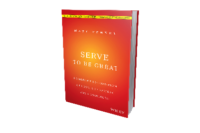![]()
Serving 7 Million People
by Dan Malovany
Yamazaki’s highly automated Yokohama #2 facility outside Tokyo houses 14 lines that produce everything from white bread and donuts to traditional Japanese cakes. But now imagine each of Yamazaki’s 25 plants ...
It’s not simple to paint a picture of the size and scope of Yamazaki Baking’s operations, but the company’s Yokohama #2 plant located just south of Tokyo is a good starting point. Compared with the company’s 24 other plants, the 400,000-sq.-ft. facility built in 1976 ranks in the middle, perhaps No. 10 in size, notes Kazuhiro Yano, plant manager for the operation.
|
Yokohama #2 has 14 lines that produce 720 different products, including packaged bread, filled buns, pastries, French bread, donuts, Western-style snack cakes and Japanese style confectionery items, just to name a few. In 2003, the facility generated the U.S. equivalent of $266 million in annual sales.
Today, it serves a market with about 7.1 million people, which is typical for the 10 Yamazaki plants that operate in the densely populated region surrounding Tokyo as well as for the four large facilities that serve the Osaka region.
But how big is big? In terms of annual sales, Yamazaki’s largest operation in Nagoya had the U.S. equivalent of about $350 million, or about the same annual sales one of the Top 25 wholesale packaged bread and sweet goods baking companies in the United States. Take into account that its next three largest facilities Chiba, Musashino and Osaka #2 plants had nearly the same amount of sales as Nagoya, and it’s easy to see why Yamazaki is Japan’s largest baking operation.
In general, each plant produces a full line of products. However, longer shelf-life products, such as frozen products, confectionery or beverage items, are produced at smaller facilities with more limited lines. Fresh packaged goods have a shelf life of four to five days. While some products are exchanged among the plants to improve operational efficiencies, each facility operates as a self-supporting business in many ways. For example, they all have their own accounting systems. Each plant has its own delivery routes. Typically, orders from major supermarket, convenience store or other retail chains are broken down by store and sent electronically to the company. After a production schedule is created, the products are produced and broken down by store in the warehouse area for delivery twice a day.
Overall, 3,600 trucks deliver Yamazaki’s products to about 100,000 retail outlets throughout most of Japan. Some 14,000 full- and part-time employees work in its bakeries. Yamazaki has a 12,000-strong sales force, in addition to administrative, accounting and human resource personnel.
The Yokohama #2 plant has 650 employees working in the bakery and 400 in the sales and distribution departments. The three-floor operation has about 220 trucks serving 5,176 stores in the Kanawaga region, which includes such cities as Machida, Yokohama, Kawasaki, Sagamihara, Shizuoka and the Izu Peninsula.
At the same time, while the plants operate like self-sustaining businesses, certain other operations are overseen on a company-wide level. Sanitation, for instance, follows a master-cleaning schedule for all lines and systems. Both plant and corporate food safety groups routinely examine the facilities.
Likewise, capital expenditures are coordinated on a corporate level. Yamazaki typically invests about $180 million annually, mostly on maintenance and upkeep of its 25 plants.
But when the company invests in new equipment, it invests big time. That’s because, when it rolls out a new line to one plant, it often installs the operation in most of its other facilities as well, Yano says.
In 1992, for instance, when Yamazaki opened its newest plant in Matsudo, many of the new systems in that facility was eventually installed in older bakeries as well. Most recently, Yano notes, the company upgraded its white bread lines and improved slicers for sweet bread production in the Yokohama #2 plant.
|
Taste of Yamazaki
During SF&WB’s tour of Yamazaki, we literally had a chance to experience how the company was run. After the interview with Nobuhiro Iijima, Yamazaki’s president, it took about an hour to drive from the company’s Tokyo headquarters to the Yokohama #2 plant. During that time, we had a chance to taste some of Yamazaki’s signature and new products.
The Nice Stick, for example, is one of the top three selling sweet buns. The 8-in., baguette-shape product is filled with a sweet, buttery cream and has the texture of a soft dinner roll or hamburger bun. Another top-selling sweet bun, ChocoChip Stick, is a bread stick that comes in a 9-pack format.
Yukiichigo, a best-selling Japanese sweet good, is shaped like a strawberry snowball, except the outside has a soft sticky rice sheet coating with fresh cream, strawberries and a light chiffon cake inside. Kushi Dango is popular as well. The marble-sized rice balls, which come four on a skewer, are coated in a syrupy coating and dollops of soy sauce. There are four skewers in a package.
Meanwhile, Yamazaki’s Whole Banana is a popular Western sweet snack. Actually, it’s more than just a snack. It’s a dessert. A whole banana and real cream are inserted inside a round yellow sponge cake that is folded up like a pita sandwich. Other Western snacks include Swiss rolls and Pie Chou, a 4-in. round, custard-filled pastry with an éclair-style crust.
Arriving at the plant, visitors must remove their shoes, which are placed in a locker, put on slippers, wash their hands and even gargle with disinfectant before heading inside the facility.
In the conference room, Yamazaki had rolled out a wide display of about 100 products that are produced at Yokohama #2. On four card tables were packages of sliced bread, Danish, donuts, Parisian-style hard rolls and a number of hamburger buns, hotdog buns and other meat-filled breads and buns. Meal replacement is definitely the hot button with today’s Japanese consumers, says Satoru Hiramatsu, assistant plant manager.
Many products, he adds, are long-standing Japanese delicacies or have been created specifically for Japanese consumers, such as thin-crusted soft rolls or even donuts filled with a variety of bean paste, curry, cream or sweet fillings. With the exception of conventional panned bread, most of the products produced at Yokohama #2 are filled or topped with a variety of sweet, savory, cheese or meat fillings.
Others, Yano explains, are new products developed by the plant as part of Yamazaki Baking’s corporate goal of producing 5,000 products a year. Every month, the Yokohama #2 plant introduces about 10 new products. Some new items include a sausage-filled pastry, a chocolate-covered croissant with almond or putting yogurt in the bread formula which produces some unique product attributes.
“After you toast it,” Yano says, “it becomes crispy on the outside and soft in the middle. It’s not as hard as other toasts. It’s like a thin crisp crust with a warm soft bread inside.”
Lining up Production
Before entering the actual production area, all visitors must put on a full white uniform along with white shoes, hat and hairnet. Hands must be thoroughly washed and disinfected as a part of the company’s strict food safety programs. An air chamber blows all of the hair and dust off the uniform prior to visitors entering certain areas of the plant.
Bread accounts for 60% of production volume while Western-style snacks and Japanese confectionery equally make up the remainder. Overall, the Yokohama #2 plant is a much larger facility than Yokohama #1, another bakery in the area.
The packaged bread line resembles systems in the United States and produces Pullman-type lidded breads at a rate of 140,000 pieces a day. The bakery uses a sponge-and-dough process with 4.5 hours of fermentation in a room that holds about 26 troughs. After fermentation, the troughs are elevated to the top of two five-pocket dividers. Following checkweighing, which recycles underweight pieces, the dough passes through one of two rounders and through a sheeter, curling chain and pressure plate before dropping into four-strap pans.
After traveling through a continuous proof-and-bake system, the loaves cool for about an hour before traveling through slicer/baggers that can package three loaves at a time. An inkjet coder stencils on the code date as well as other production information. Finally, the packaged breads travel through an automatic basket loading and stacking system to one of 29 docks.
The bakery uses a complete control management system for distribution. Bar codes tell the operator where the basket goes and how many baskets there should be in the stack and verifies that the order is complete. After reading the bar code, employees simply move the stack down the aisle where the red light is flashing.
Here is a brief review of some of the other production lines.
The VEM bread line produces about 50,000 pieces of premium, hand-made looking products a day. A hard roll line makes typical French bread at a rate of 30,000 daily.
The following lines produce a myriad of Western-style snack products. For instance, the flexible Danish and pastry line cranks out 60,000 pieces each day. To make traditional pastries, laminated dough is stored overnight in one of two proof boxes, Yano says. During SF&WB’s visit, the bakery was making a coronet, a 3-in.-high spiral of chocolate-laminated puff pastry dough that’s baked and then filled with a chocolate cream. It’s one of the best-selling snacks produced on this line.
Overall, the flexible, European-style operation produces traditional puff pastries, pies, apple strudel and croissants filled with everything from chocolate and cream to red-bean paste for Japanese tastes. Yano notes that the apple puff pastry is the most popular. Yamazaki sells about 14 million of those items each year.
The bakery’s Western-style snack operations also include a donut line that makes 90,000 yeast-raised and cake varieties daily. Additionally, both Swiss rolls and Western-style cakes, which are packaged in slices, are produced on separate lines at a rate of 50,000 pieces a day.
The Patella line produces about 50,000 coffee, strawberry and cheese-flavored Western sponge cakes daily. The Castella line makes Portuguese-based sponge cakes made with eggs, sugar and flour, at a rate of about 10,000 pieces a day. There’s also the Chou a la Crème line that makes 60,000 filled custard créme snacks daily.
Meanwhile, some of the higher unit and more labor-intensive products are the Japanese sweet products. One line produces typical Japanese sweets made with red bean paste, chocolate or cream fillings at a rate of 260,000 pieces a day. Twelve varieties of mini-red bean paste buns are cranked out at a rate of 300,000 pieces each day. Yet another line produces 230,000 Chinese steamed buns, using Yamazaki’s own red bean paste, each day.
There is also a chilled “dessert room” that makes about 20,000 chilled cakes, pizza and other specialty products daily.
R&D and the Future
After the tour, we returned to the conference room for afternoon tea and a light dessert. Company officials explained that the Yokohama #2 plant is one of five facilities that has been audited by the American Institute of Baking. Although others will eventually be audited, Yamazaki has implemented the institute’s good manufacturing practices into its daily operations at each facility.
At the company’s central laboratory, scientists constantly are evaluating existing product lines to see how they can improve them. They are also exploring new processes and how to incorporate cutting-edge ingredients to offer consumers better products that provide enhanced value at a fair, competitive price.
The practice isn’t new. It’s the same philosophy that Yamazaki’s founder Tojuro Iijima instilled in the company 56 years ago.




